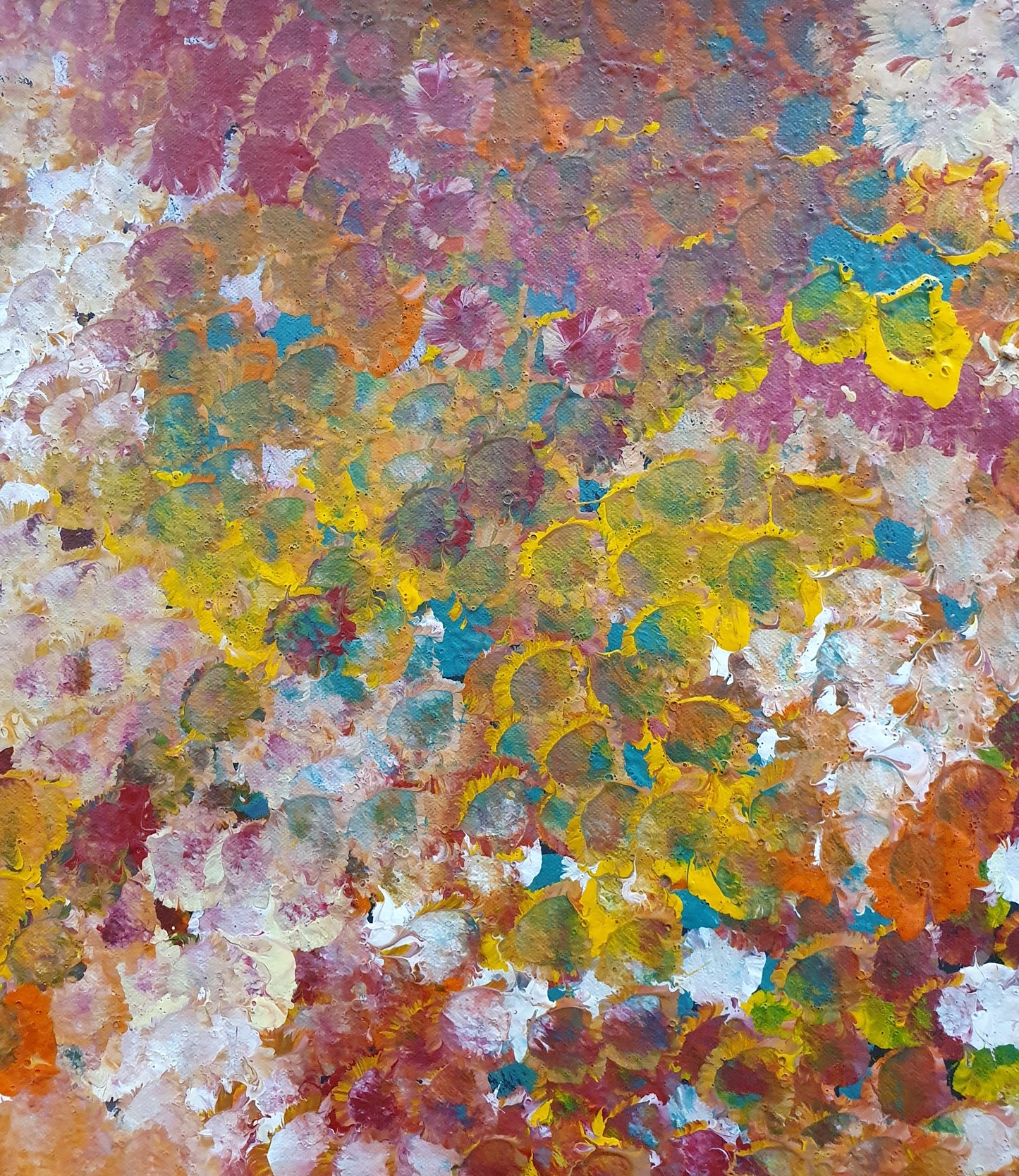Aboriginal Painting - Bush Plum Dreaming
Aboriginal Painting - Bush Plum Dreaming
Janet Golder Kngwarreye
SKU:Cat. n. JGN 5124-1
Couldn't load pickup availability
Aboriginal Painting Title: Bush Plum Dreaming
Aboriginal Artist: Janet Golder Kngwarreye
Size: 43 x 36 cm Unframed
Medium: Acrylic on canvas
Authenticity:
COA and pictures of the artist holding her work will be provided.
Story:
The Bush Plum Dreaming Story is a big story that spreads right across the western and central deserts from Lajamanu and Warlpiri country to the Utopia homelands.
The Bush Plum Dreaming or Creation Story from the Utopia region goes like this: In the Dreamtime, winds blew from all directions, carrying the bush plum seed to the artists’ ancestral lands. The first bush plum of the Dreamings grew and bore fruit and dropped more seeds. Many winds blew the seeds all over the Dreaming lands.
To ensure the continued fruiting of this plant each season, the Aboriginal people pay homage to the spirit of the bush plum by painting about it and recreating it in their ceremonies through song and dance. The patterns in the paintings celebrate the Bush Plum work on many levels: they represent the fruit of the plant, its leaves and flowers and also the body paint designs that are associated with it during the ceremony.
The bush plum is a popular variety of bush tucker that is only found at certain times of the year. It is found throughout most of the Utopia region and as far west as Lajamanu. Sadly it has declined in abundance due to the grazing of introduced animals, particularly cattle and rabbits. The bush plum fruits in the summer after rain and is an important food source, even though not all of the plum is edible. The plums can be collected when ripe and immediately eaten, or they can be dried and eaten later.
The bush plum also plays an important part in Warlpiri Dreaming and ritual practices involved in Yilpinji, Love Magic. When a girl falls in love, she goes to her female relatives and is instructed on how to attract her man as a lover. She weaves a belt out of her hair while singing Yilpinji songs, imbuing the belt with magic. When the man approaches, she entices him with her charms until he comes under the influence of her allure. She reveals the belt as his ardour grows and persuades him to place the belt around her waist. As he does, he falls under her spell, and they go off together as a couple. Together they eat bush plums and hunt for food. Other important Warlpiri, on learning of their tryst, follow them and confront them as a couple and also eat the bush plums. In this way, the group recognizes their relationship and acknowledges that it is an appropriate match. They are now recognized by all as a couple. (From love… art and ceremony Yilpinji Christine Nicholls, The Australian Art Print Network)
Renowned Warlpiri artist Lorna Napurrula Fencer (1923 - 2006) celebrated the bush plum in her inimitable style. Lorna Napurrula was the custodian of inherited lands at Yumurrpa situated near Chilla Well, south of the Granites Mine Area of the Tanami Desert. In 1949 many Warlpiri, including Lorna Napurrula Fencer, were forcibly transported to the government settlement of Lajamanu at Hookers Creek, situated in the country of the Gurindji people, 250 miles to the north of their own country around Yuendumu. Lorna Napurrula Fencer nevertheless maintained and strengthened her cultural identity through ceremonial activity and art and asserted her position as a prominent elder and teacher in the community.
Lorna Napurrula Fencer’s mother’s country was Yumurrpa. This is where the Yarla (Yam or Big Bush Potato) Dreaming track begins on its travels north toward Lajamanu. Her father’s country was Wapurtali, home of the little bush potato. The travels of Napurrula and Nakamarrra kinship or skin groups were the inspiration for Lorna Napurrula Fencer’s work, and she was a custodian of the Dreamings associated with bush potato (yarla), caterpillar (luju), yam, bush onion, bush tomato, bush plum, many different seeds, and importantly springwater, for the Napurrula, Nakamarra, Japurrula, and Jakamarra skin group.
Share






